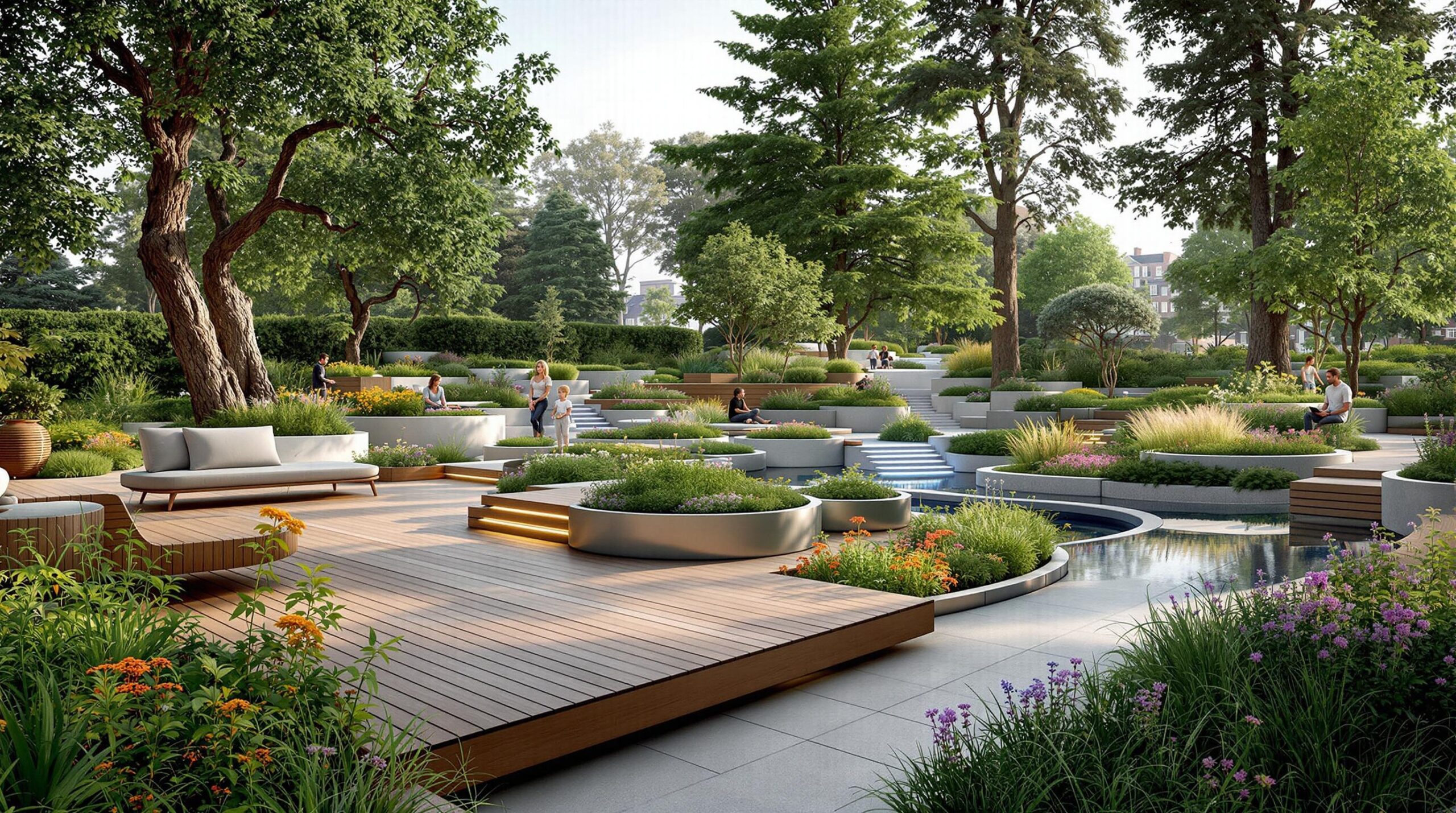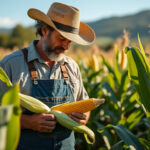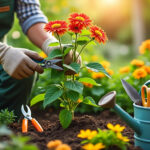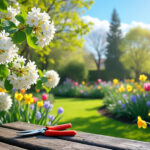The practice of structural landscaping is evolving rapidly, driven by advancements in technology, shifts in market dynamics, and growing concerns over sustainability. In 2025, understanding and implementing effective landscaping solutions will not only enhance outdoor aesthetics but also improve environmental resilience and functionality. As landscapes become increasingly integral to urban planning and community development, the importance of skilled professionals in this field cannot be overstated. This article delves into various facets of structural landscaping, its critical components, and its relevance in today’s landscape, offering valuable insights to homeowners and industry professionals alike.
Below is an outline of the major sections covered in this article:
- What is Structural Landscaping?
- Key Components of Structural Landscaping
- Importance of Planning in Structural Landscaping
- Materials Used in Structural Landscaping
- Benefits of Structural Landscaping
- Current Trends and Future Directions
- Hiring Professionals in Structural Landscaping
- FAQ
What is Structural Landscaping?
Structural landscaping encapsulates the vision of turning outdoor spaces into functional and aesthetically pleasing areas through thoughtful design. This not only involves the use of plants but also incorporates hardscape elements such as paths, walls, and patio areas. Structural landscaping creates a solid foundation that enhances property value while catering to sustainability goals.
The challenge in structural landscaping lies in achieving a balance between functionality and aesthetics. By integrating various elements such as plants, stones, and durable materials, designers aim to establish a cohesive outdoor environment that can adapt to environmental conditions and human activity.
Understanding the Blend of Hardscape and Softscape
A central theme in structural landscaping is the collaboration between hardscape and softscape:
- Hardscape: This includes non-plant elements such as patios, retaining walls, and walkways, providing structure and usability.
- Softscape: Involves plant life such as trees, shrubs, and flowers that introduce color, texture, and ecological benefits.
The harmonious integration of both components results in sustainable landscapes that are visually appealing and functional throughout various seasons.
Key Components of Structural Landscaping
Creating a multifaceted landscape requires a comprehensive understanding of its key components, which include:
- Hardscape Features: Think patios, decks, driveways, and retaining walls that provide stability.
- Softscape Elements: Plants, trees, lawns, and shrubs that contribute to aesthetics and environmental health.
- Drainage Systems: Ensuring proper water flow is critical for the longevity of both plant life and hardscape materials.
- Irrigation Systems: Efficient watering mechanisms are essential for maintaining softscape vitality.
- Lighting: Enhances safety and outdoor ambiance during evening hours, playing a significant role in aesthetics.
| Component Type | Description | Examples |
|---|---|---|
| Hardscape | Non-plant structural elements | Patios, Walkways |
| Softscape | Plant life and greenery | Trees, Shrubs |
| Drainage | Systems for water management | French Drains, Catch Basins |
| Irrigation | Systems for water supply | Drip Systems, Sprinklers |
| Lighting | Illumination for safety and aesthetics | String Lights, Spotlights |
Maintenance of Key Components
Each component of structural landscaping comes with its own set of maintenance requirements:
- ⭐ Hardscape: Regular cleaning and repairs.
- 🌱 Softscape: Pruning, fertilizing, and regular watering.
- 💧 Drainage: Clearing debris and ensuring that drainage paths are unobstructed.
- 🚰 Irrigation: Checking for leaks and scheduling seasonal adjustments.
- 💡 Lighting: Replacing bulbs and checking wiring for safety.
Importance of Planning in Structural Landscaping
Effective planning is foundational to successful structural landscaping. This involves not only an artistic vision but also a thorough assessment of the site conditions:
- 🌍 Site Analysis: Understanding soil type, topography, and climate is critical for choosing the right materials and plants.
- 🔍 Design Considerations: The layout must accommodate sun exposure, drainage, and the intended use of the outdoor space.
- 👷 Regulatory Compliance: Being aware of local regulations and obtaining necessary permits ensures that the project stays on track.
Steps in Strategic Planning
To successfully plan a landscaping project, follow these essential steps:
- Conduct a site analysis to assess environmental conditions.
- Identify the purpose of the landscape (e.g., recreational, aesthetic, functional).
- Develop a cohesive design blueprint that integrates both hardscape and softscape elements.
- Establish a timeline and budget to ensure the project is completed on time and within financial limitations.
Flora Incognita: Using AI to Transform Garden Design and Plant Care
Materials Used in Structural Landscaping
The choice of materials is crucial in conveying durability, aesthetics, and sustainability.
- 🪨 Natural Stone: Offers durability and timeless appeal.
- 🧱 Concrete: Versatile and can be molded into various forms.
- 🌳 Sustainable Wood: Eco-friendly choices are becoming increasingly popular among environmentally conscious homeowners.
- ♻️ Recycled Materials: Use of recycled products reduces waste and promotes a sustainable design ethos.
| Material Type | Benefits | Applications |
|---|---|---|
| Natural Stone | Durable, aesthetic | Patios, Walls |
| Concrete | Versatile, cost-effective | Pavements, Paths |
| Sustainable Wood | Eco-friendly | Decks, Fencing |
| Recycled Materials | Reduces environmental impact | Walkways, Decorative Features |
The Shift Towards Eco-Friendly Materials
As the demand for sustainable landscapes rises, many designers are turning to eco-friendly materials. This shift not only reduces environmental impact but also meets homeowners’ preferences for responsible landscaping practices. Choosing materials such as reclaimed wood or permeable pavers can contribute significantly to both aesthetics and sustainability.
Benefits of Structural Landscaping
Investing in structural landscaping yields multiple advantages, enhancing both the environment and property valuation:
- 🏡 Increased Property Value: A well-designed landscape raises the market value of a property.
- 💚 Improved Functional Spaces: Landscapes can serve as recreational areas, enhancing outdoor living experiences.
- 🌺 Environmental Benefits: Support biodiversity and improve air quality by incorporating native plants.
- 🌧️ Stormwater Management: Proper landscaping can mitigate flooding and manage runoff efficiently.
Case Studies of Successful Landscaping Projects
Examining successful projects can provide valuable insights:
For instance, an urban residential area in 2023 transformed a neglected public park into a thriving green space with the installation of native plants, seating areas, and walking paths. As a result, property values in the vicinity increased by 20%, highlighting the added value of well-planned landscaping.
Current Trends and Future Directions in Structural Landscaping
The landscape design industry is continuously evolving, influenced by contemporary trends and technological advancements:
- 🌳 Incorporating EcoScape Designs: Focus on native plants and sustainable materials.
- 🔥 Outdoor Living Spaces: Expanding functional areas such as kitchens and fire pits.
- 🌐 Integration of Technology: Use of drones and GIS for planning and design.
- 💡 Smart Irrigation Systems: Automated systems that conserve water while maintaining landscaping.
| Trend | Description | Impact on Landscaping |
|---|---|---|
| EcoScape Designs | Use of sustainable and native plant species | Promotes biodiversity and ecological health |
| Outdoor Living Spaces | Expansion of functional outdoor areas | Enhances property usability and enjoyment |
| Technology Integration | Utilization of modern tools for design | Improves efficiency and precision in landscaping |
| Smart Irrigation | Automated systems for water management | Reduces waste and conserves water |
Emphasizing Community Benefits
Landscaping trends are increasingly focused on community engagement. Creating communal spaces where neighbors can interact fosters a sense of belonging and encourages stewardship of the environment.
Hiring Professionals in Structural Landscaping
While many homeowners may consider DIY landscaping, hiring professionals can ensure optimal results:
- 🎓 Expertise: Professionals possess knowledge of landscape design principles and plant selections.
- ⚙️ Efficient Execution: Experienced landscapers can execute the design accurately and on time.
- 🕒 Time-Saving: Outsourcing the work allows homeowners to focus on other priorities.
- 🚧 Avoiding Pitfalls: Professionals can navigate local regulations and design complexities, mitigating potential issues.
When searching for landscaping experts, consider firms like GreenSpace Innovations or EcoScape Designs, known for their commitment to sustainable practices and innovative solutions.
Steps to Select a Landscaping Professional
Choosing the right landscaping professional can significantly impact the success of your project. Here are steps to consider:
- Research and shortlist potential designers based on credentials and reviews.
- Schedule consultations to discuss vision and objectives.
- Request portfolios and previous work examples.
- Evaluate quotes and ensure transparency in costs.
FAQ
What does structural landscaping involve?
Structural landscaping involves designing and implementing outdoor spaces with a focus on both aesthetics and functionality through the integration of hardscape and softscape elements.
Why is planning important in landscaping?
Effective planning ensures that all environmental and functional considerations are taken into account, leading to sustainable and successful landscapes.
What materials are commonly used in structural landscaping?
Common materials include natural stone, concrete, sustainable wood, and recycled materials that support aesthetic goals and environmental sustainability.
How can I enhance the environmental benefits of my landscape?
Incorporating native plants, implementing efficient irrigation systems, and using permeable materials can significantly improve the ecological impact of your landscape.
Should I hire a professional for my landscaping project?
While DIY landscaping can be appealing, hiring a professional ensures expertise, efficient execution, and compliance with local regulations, ultimately saving time and reducing complications.















